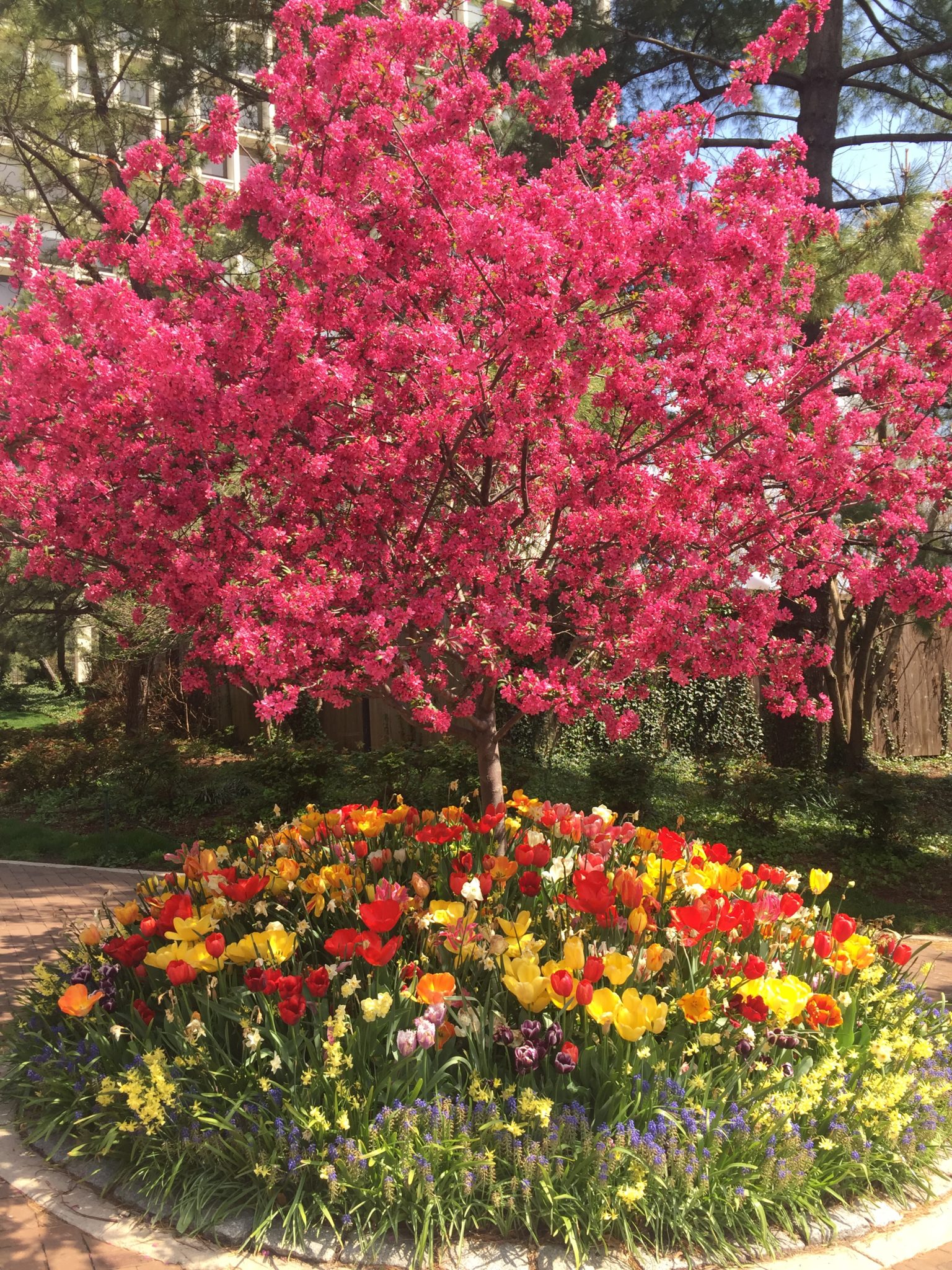Planting Fall Bulbs for a Hopeful Future
By Tammy Thornton

Planting fall bulbs is an act of faith—hiding treasure in the ground with the hope that it will keep safe through snow and storms, and then produce something beautiful in the spring. It’s fun to think of these little secrets buried and invisible to all. Then suddenly, in April or May, the garden bursts full of life, like the scene from “The Secret Garden.” In early spring, each day something new reveals itself, and you wonder how you ever survived the dreary days of winter. When spring finally does show up, I always kick myself for not planting more bulbs in the fall. Now is the best time to plant spring-blooming bulbs, but even if you are a procrastinator like me, you can usually sneak a few into the ground as long as the soil is still workable and not frozen.

Tulips are among my favorite flowers, with so many colors ranges, a box of Crayolas would be jealous. You can find them in shades of peach, pink, bright red, or yellow, and even a purple so deep it almost looks black. The varieties are endless, with enough choices to please any style. You can choose from classic single tulips or doubles, which resemble peonies; fringed or the stunning and evocative parrot tulips—worthy of a masterpiece oil painting. Plant the mid to early blooming “Purple Prince” tulip, followed by the mid-season “Pretty Princess,” and you will live a charmed life indeed.

But no good fairy tale can be complete without its villain, so allow me to introduce my nemesis, the squirrel. Please, no hate mail, squirrel lovers, I’ve been at this too long to let that fuzzy tail fool me. Many hours and gray hairs have been spent trying to keep them away from my precious tulips. I’ve tried pepper flakes, moth balls, human hair, and chicken wire. Lately, I’ve employed the services of a very large, dopey, but loveable dog. Just when I’ve been about to throw in the towel, a brave, lovely maroon tulip has shown its ability to survive and —smitten once again—I vow to carry on.
Back in the 1630’s, the tulip was all the rage in the Netherlands and people were worked up into a frenzy culminating in Tulip Mania. At its height, speculators were risking enough money to buy a grand house in Amsterdam for the future ownership of a single, exotic tulip bulb. Oddly, it was a virus in the bulb that caused the colors to be “broken” resulting in their much-coveted variegated pattern of stripes and flames. Sadly, the quest for beauty became a lust for money, and greed turned into disaster as the danger of trading in futures ruined families and fortunes.
In modern times, when gazing at an urn of blooming tulips we can appreciate why they were such a status symbol and caused such a craze. But such beauty can be yours with very little effort and a bit of patience. Plant early, mid, and late blooming varieties for a succession of color.
Many other spring-blooming bulbs such as daffodils, hyacinths, crocus, and alliums can be planted in fall. These flowers have the added benefit of being distasteful to deer, rabbits, and squirrels.
Daffodils are a sure sign of spring. Most years I see daffodils peeking up through the snow and it gives me hope that, even though cold days may still be in the forecast, the promise of spring is near. In my garden, I have cute clusters of short, yellow daffodils called “Little Gem”. The Latin name for daffodils is Narcissus. As one version of the Greek myth goes, Narcissus was so taken with his own beautiful image reflected in a pool of water, that he wasted away staring at himself. All that remained in his spot was the flower we now call daffodil. I think it was a pretty good trade. I’m drawn to white daffodils that look so pretty as a backdrop to the small purple flowers of blue grape hyacinth (muscari), another must-have in the spring garden. Both flowers act as a neutral, blending compatibly with most colors. Bright red tulips look striking behind the bluish purple of grape hyacinths, but the soft pink of Angelique tulips paired with the tiny grape flowers are equally stunning. Both daffodils and grape hyacinths will spread, and the more, the better. Don’t plant single flowers in a line, which will look sparse, but stagger your row of flowers or plant in clusters for maximum impact of color.
Another favorite fall bulb to plant is allium. Perhaps you’ve seen this tall flower that’s an orb on a stick. It seems like something you’d see in a Dr. Suess book but it is very pretty, and compliments many other spring flowers. One of my favorite varieties is “Purple Sensation.” Alliums (surprisingly in the garlic family) can also be found in shades of white, pink, and blue.
Be sure to layer your potential flowers, with the taller ones, like allium, in the back and smaller ones, like grape hyacinth, in the front. If you are planting a single type of flower, plant in clusters of three to five bulbs. Keep in mind that, though most spring-flowering bulbs need to be planted in full or filtered sun, you will have more areas available to plant than in your summer garden. In early spring, trees have not yet attained their leaves and much more sun is able to peek through the branches.
Hopefully, you’ve been inspired to get digging. Don’t delay, because “winter is coming”. You won’t regret the results in the spring, and your winter can be a little warmer as your dreams are filled with the hope of a bright, beautiful, and colorful future.
Show quoted text







One Response
Love what you write, keep them coming.